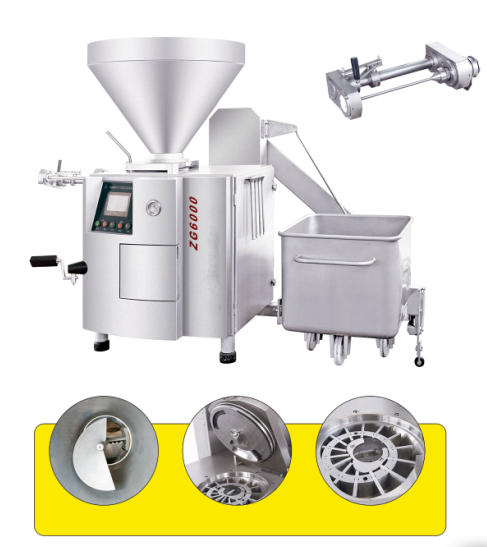
Dec . 24, 2024 15:55 Back to list
filling pipe for sausage filler
Filling Pipes for Sausage Fillers An Essential Guide
Sausage making is both an art and a science, and one of the most critical components in this process is the filling pipe used in sausage fillers. The efficiency, quality, and flavor of the sausage can be significantly influenced by the type and design of the filling pipe. In this article, we will explore the various types of filling pipes, their uses, and the importance of selecting the right one for your sausage-making endeavors.
Understanding the Filling Pipe
A filling pipe is a cylindrical attachment connected to a sausage filler or stuffer. It serves as a conduit through which the seasoned meat mixture is pushed into the casing. Various types of pipes are available, each designed for different sausage styles, casings, and production scales. The dimensions, materials, and shapes of these pipes can vary widely, affecting the overall performance of the sausage filling process.
Types of Filling Pipes
1. Standard Filling Pipes These are the most common type and come in various diameters. They are suitable for filling traditional sausage casings and are widely used in home and commercial sausage making. Standard pipes usually have a smooth interior for easy cleaning and optimal flow of the mixture.
2. Specialty Filling Pipes For those looking to experiment with different sausage types, specialty filling pipes are available. These may include tapered or wider designs that are appropriate for stuffing different casings, such as collagen or fibrous casings used for larger sausages. Some specialty pipes can even be customized based on unique recipes or requirements.
3. Duplication Filling Pipes These pipes come with multiple outlets that allow for the simultaneous filling of multiple casings. This is particularly beneficial for commercial operations aiming to increase production efficiency without sacrificing quality.
4. Nozzle Attachments Accessories such as nozzles can be added to standard filling pipes to create specific shapes and sizes of sausages. This versatility allows for the creation of gourmet sausages or unique presentations that can appeal to consumers.
Importance of Material Selection
filling pipe for sausage filler

Filling pipes are typically made from stainless steel or food-grade plastic. Stainless steel is preferred for its durability, resistance to corrosion, and ease of cleaning. It ensures that no unwanted flavors leach into the sausage mixture, which can happen with lower-quality materials.
Food-grade plastic pipes are also available, especially for smaller operations or home sausage makers. While plastic can be easier to handle and lighter, it may not provide the same level of sanitation or longevity as stainless steel.
Ensuring Proper Diameter and Size
Selecting the correct diameter for your filling pipe is paramount. If the diameter is too small, it can restrict the flow of the meat mixture, leading to uneven stuffing and potential air pockets in the sausage. Conversely, too large a diameter can cause the casing to burst and waste precious ingredients.
Typically, smaller filling pipes (about 1/2 inch) are suitable for breakfast sausages or smaller links, while larger pipes (up to 1 inch or more) are commonly used for filling bratwursts or larger sausages. It's essential to match the pipe size with the casing used to ensure a seamless stuffing process.
Cleaning and Maintenance
Cleaning the filling pipes after each use is crucial to prevent cross-contamination and ensure the safety of your product. Most stainless steel pipes can be disassembled easily and are dishwasher safe. However, hand washing with hot, soapy water is often recommended to reach all nooks and crannies. Plastic pipes should also be cleaned thoroughly to avoid any bacterial build-up.
Conclusion
In conclusion, the filling pipe is not just a simple accessory in the sausage-making process; it plays a vital role in determining the quality and efficiency of the end product. Understanding the different types of filling pipes, their appropriate uses, and their maintenance will enhance your sausage-making experience. Whether you are a passionate home cook or a commercial sausage producer, investing in the right filling pipe will undoubtedly elevate your craft to the next level. Embrace the art of sausage making and explore the world of flavors that await you!